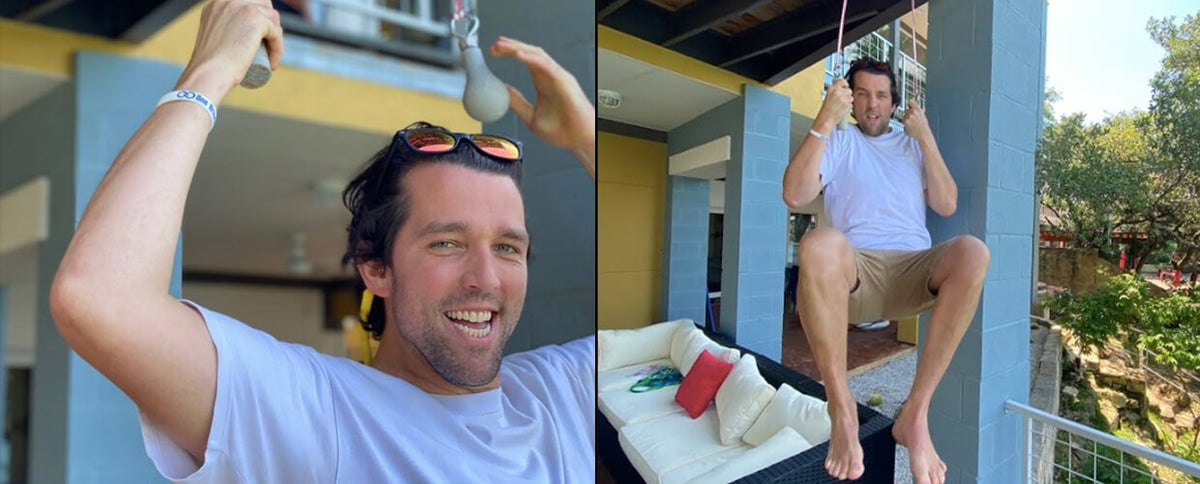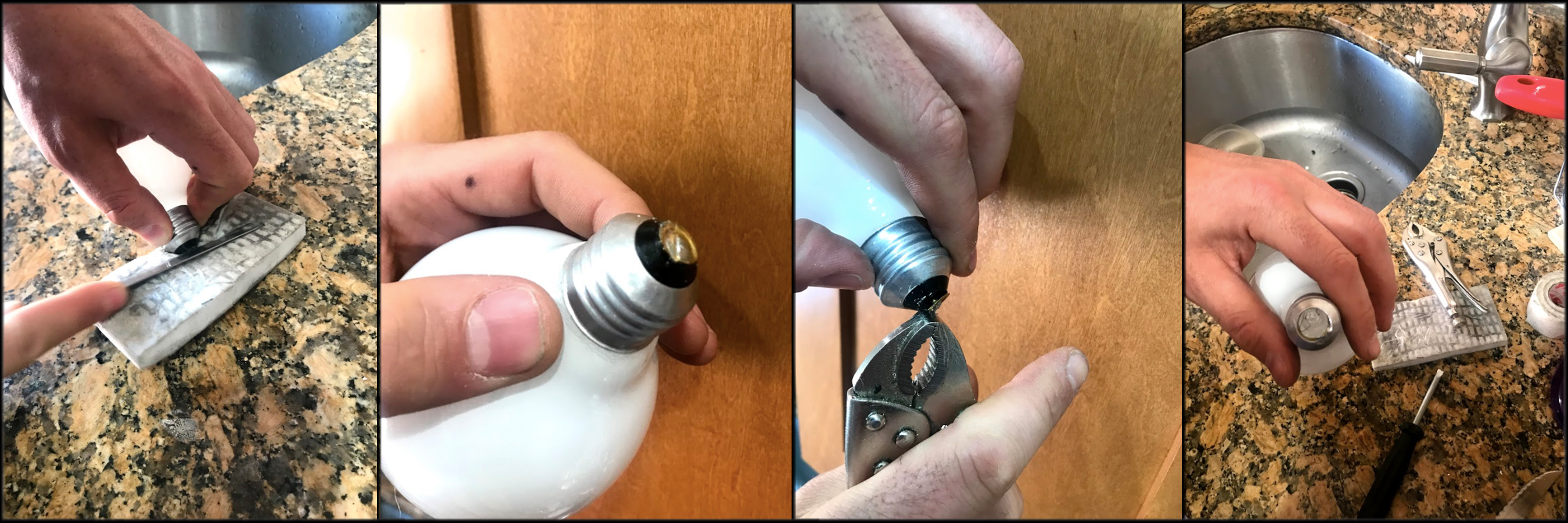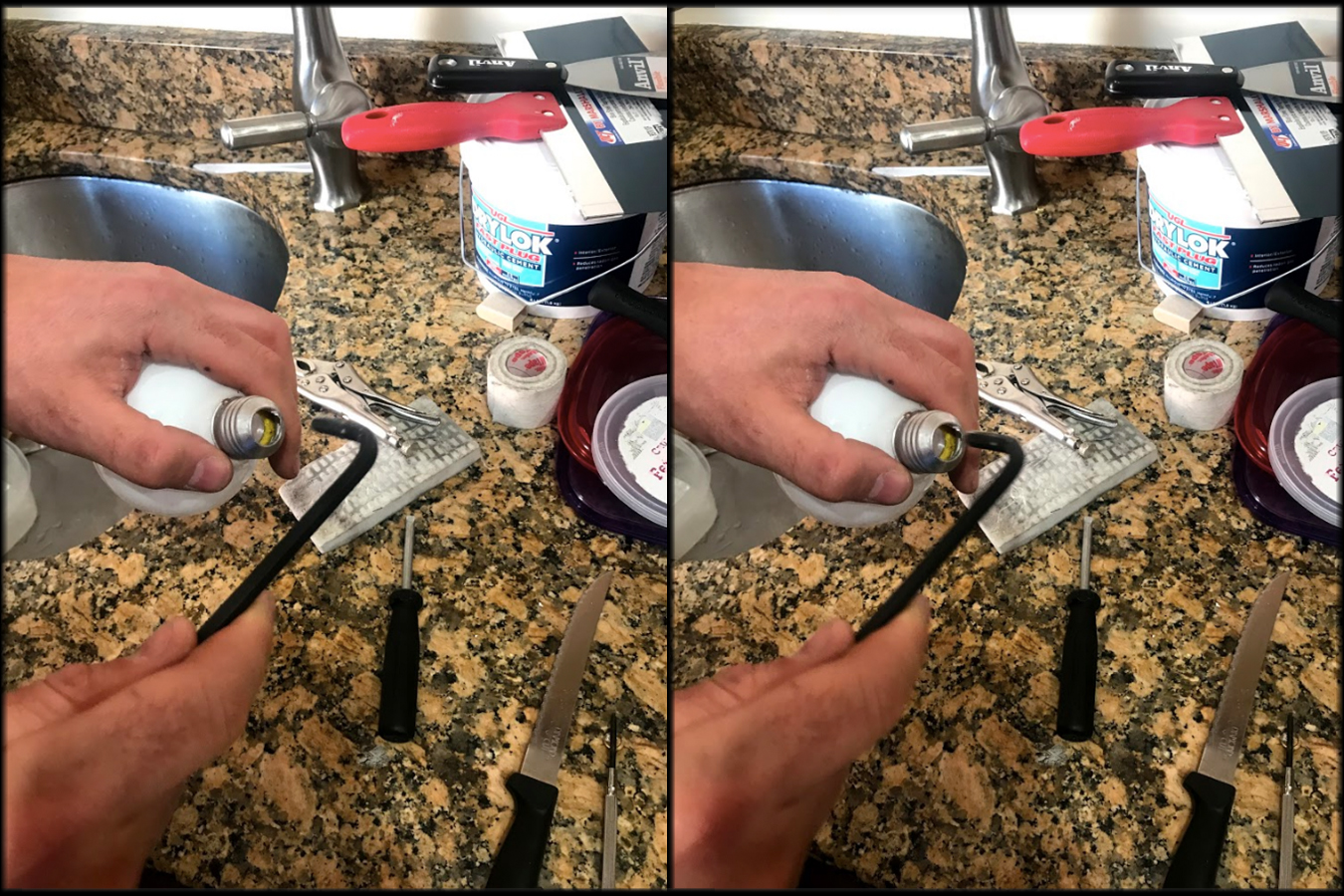How to Make Concrete Holds to Train Your Grip Strength

Grip strength is essential to most Spartan obstacles. Building strength in the dozens of tiny muscles in your fingers, hands and forearms can have major performance payoff. But without access to a gym, grip strength can take a backseat to the rest of your workout regimen. Don’t let it.
Because grip strength is incredibly important to just about everything you do on the course, here's how to make concrete grip-strength training holds. As Senior Director of Build QC and Innovation at Spartan Race, I have found myself drilling holes through sections of pipe to make a hanging pull-up or firm grip trainers, bolting eyes through baseballs, hanging monkey fist knots from the ceiling, repurposing my ladder hangers and basically attaching anything I can from a carabiner to challenge my grip strength these days. That said, I ran out of options and found myself looking upward for inspiration.
Related: How to Improve Your Grip Strength
As I stared upward, thinking of how my hands interact differently with different materials, I drew inspiration for this concrete mold from a lightbulb. I found myself pinch-gripping the hot glass in the struggle to change an old bulb and thought, "How could I hang from that without annihilating the fragile 79-cent grip to be?" Epoxy was too expensive and difficult to get, so naturally my mind went the way of concrete and how to get it into a lightbulb. So here's a new, innovative (and may we say, badass) take on the cone, nunchuck and cannonball grippers you know and love, using easy-to-source incandescent lightbulbs, fluorescent light covers, eye bolts and concrete. Boom.
How to Make a Grip-Strength Trainer from a Lightbulb Mold
What you need:
Concrete Lightbulb Gripper Set Materials:
2 - Standard Incandescent Lightbulb ($0.69)
1 - 10 lb Tub Quick-Setting Cement NON AGGREGATE MIX ($8.45)
2 - ⅜”X5” Eye Bolt with Nut ($1.10ea)
1 - ⅜” Zinc Flat Washer 8-Pack ($1.18)
1 - Grout Bag ($6.47)
1 - 4’ Clear (Fluorescent) Tube Guard ($3.97)
1 - Pair Rubber Gloves (concrete is an irritant - wearing these can prevent minor chemical burns)
1 - 32 oz Bottle of Water - to add water when needed
1 - Towel or Sponge - to use as a work station
2 - 2 to 4’ Slings (to hang your grips) - we've included information on how to make your own with old 1” truck straps
Tools:
*Knife or HackSaw (or an old steak knife)
*Box Cutter / Razor Blade
*Needle Nose Pliers
*Tooth Brush
*Angled Allen Wrench (something to break the glass of the bulb)
*Tape (Painters tape ideally or any other kind of tape to keep your molds clean)
*Container to mix your concrete (1/2 gallon is large enough)
*Mixing Stick or Trowel
*Wire Brush
Related: 3 Tips to Overcoming Every Grip Strength Obstacle
Step 1:
Acquire and layout the tools and materials needed to make your Grip-Strength Trainer.

Step 2:
Begin to prep your molds (lightbulb). To start, take a standard incandescent lightbulb and make a cut into the tin metal tip of the bulb. This should give you a grab-able edge that you can leverage off with pliers. Using a sponge or towel as a cutting block, you should be able to safely accomplish this task. Use your pliers to remove the conductive tin end of your bulb, this should remove pretty easily once you get a good hold with your pliers.

Step 3:
Continue prepping your bulb mold. Now comes the tricky part: removing the glass support, a.k.a. the glass mount or guts of the lightbulb, without breaking the bulb itself. My tool of choice to remove the glass innards of a lightbulb is a ¼” sized L-Shaped Allen wrench. I use the Allen wrench as a little mallet to break away the inner glass mount by tapping through the newly-formed opening in the base of the bulb. As the glass breaks into the bulb, simply turn your bulb upside down and empty the particulates into the trash. (Your needle nose pliers can come in useful here, as well in removing everything from the interior of the bulb.)

Step 4:
Clean your lightbulb mold in preparation for introducing the concrete. Simply take an old toothbrush and scrub the interior of the lightbulb clean adding water to remove the silica white frost coating from the inner-bulb walls (modern lightbulbs are coated with a fine silica dust to create the coloring we are now cleaning away). Or you can use a clear glass bulb from the start and skip this step. Repeat Steps 2-4 to make a second matching bulb mold.

Step 5:
Prepare your next mold using a neon tube guard. In this case, one tube guard yields two nunchucks. Measure and cut 6” of tube saving the end cap for our nunchuck mold. Repeat this for the second mold. (You can experiment with the length based on your preference and length of shank of your eye bolt.) Using tape or stretch wrap and a rubber band, seal off the bottom of the tube to allow it to be used as a form for concrete in the next steps. Prepare your mold for concrete with an eye bolt, nut and washer, as pictured.

Step 6:
Time for concrete. But be aware quick-setting cement does just that, so work quickly! For two bulbs and two nunchucks, mix concrete in two batches, as it will harden too quickly otherwise. Follow the directions for your cement. In a separate pale, mix cement and water into a creamy peanut-butter like texture, adding a little more water than is typical for ease of piping (always keep a bottle of water nearby to dilute your concrete if needed). A slightly runnier mixture of concrete is useful for getting a fully settled and filled pour as well as giving you a little more time before it sets. Fill your mortar bag to the top with the mixed concrete slurry, and pipe the concrete into the forms. Start with the lightbulbs, filling them one by one to the top and taping out all bubbles before inserting the eye bolt into the form. Adding a washer to the eye bolt (on top of the bulb) before setting into the concrete creates a clean and finished look on your final product. The nunchucks fill a little easier—just remove your top cap and eye bolt combo and then fill your form to the top placing your cap and eye bolt back into the mix with some concrete in the cap to ensure your form is full. Tap your forms with your palm to get any air bubbles free from the edge, twist your eye bolt to set it securely in the concrete. Your concrete forms should be oozing out the top at this point, clean any excess concrete from the form and let it sit to dry. Use a shot glass roll of tape or a cut toilet paper tube to act as a nesting point to let your bulbs cure.

Step 7:
Let some time pass before attempting the next step. (Wait 48 hours before removing the forms, and another 48 hours after that before putting them to aggressive use.) This is the fun part: time to remove your forms. Using the same Allen wrench that I started the project with, fracture your bulb around the base and edge simply by tapping the metal to the glass. After breaking away the glass, use a wire brush to ensure all glass is removed around the base of the bulb. Free the nunchucks using a knife to score the forms and peel back the plastic outer shell.

Step 8:
Throw a sling on your new toys, hang above it above your head, get to grip-strength training… and enjoy!





